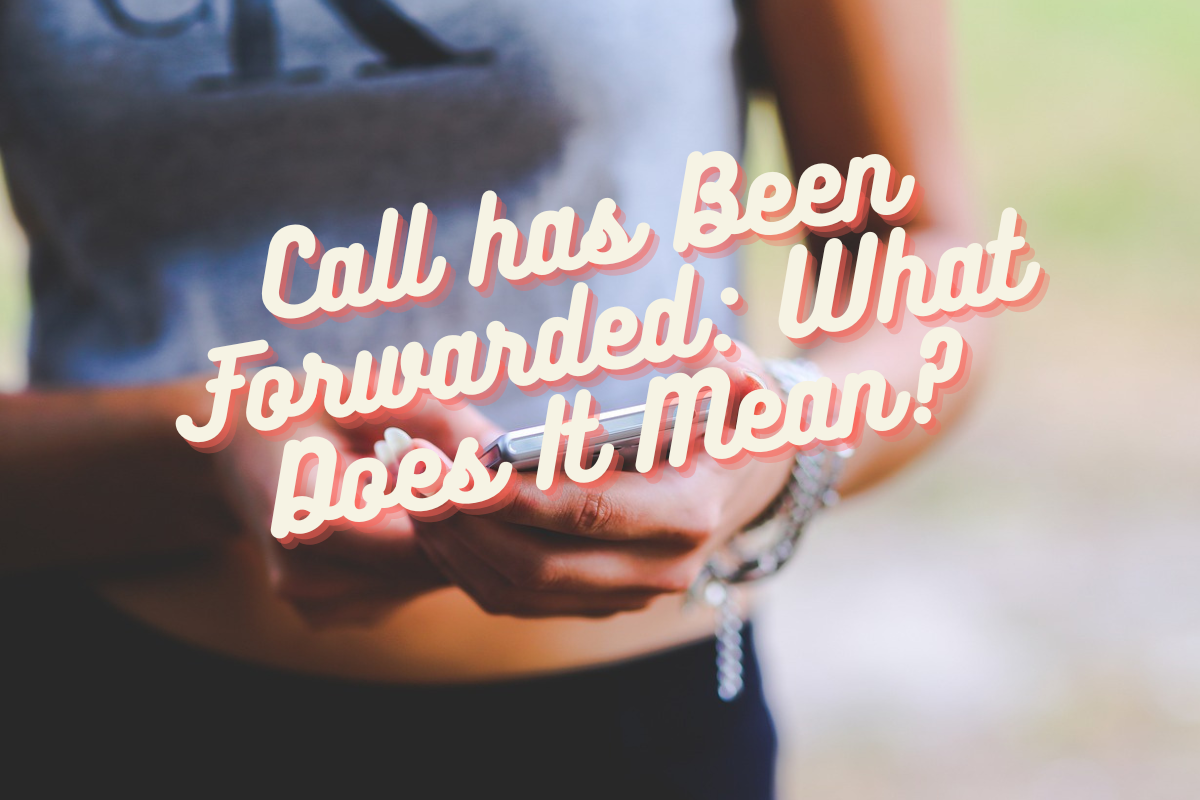Your cart is currently empty!

Call has Been Forwarded: What Does It Mean?
Phone calls play an integral role in our daily communication, but not all calls are straightforward and direct. At times, you might encounter different notifications – one of which could be the message, “Call has been forwarded.” This guide aims to help you understand what it signifies, how it occurs, and how to control it.
Understanding Call Forwarding
Call forwarding is a telecommunication feature that redirects a phone call from the initially dialed number to another number or voicemail. In this process, the “Call has been forwarded” message is simply an indicator that the call you made was redirected.
The Purpose of Call Forwarding
Call forwarding aims to ensure no call goes unanswered. This feature is helpful in various circumstances, like:
- Busy Lines: When the recipient is busy on another call, your call can be forwarded to another number or voicemail.
- Unreachable Status: If the recipient’s phone is switched off or out of the service area, call forwarding kicks into action.
- User Preference: The recipient might manually set up call forwarding to allow incoming calls for a specific number to be redirected to another number or voicemail.
Reasons for Seeing “Call Has Been Forwarded”
Here are a few reasons behind the appearance of this message:
- Recipient’s Choice: The recipient might have activated call forwarding on their phone.
- Network Settings: The cellular network could have automatically forwarded the call due to the recipient’s busy line or unreachable status.
Steps When You See “Call has Been Forwarded”
The steps to take when you see “Call has been forwarded” hugely rely on the reason you’re getting this message.
Situation 1: Intentional Forwarding by the Recipient
If the recipient has enabled call forwarding on their phone, the ball is in their court, and there’s not much you can do. Simply leave a message or try calling again later.
Situation 2: Automatic Forwarding by the Network
If the network forwarded your call because the recipient’s line was busy or they were unreachable, attempt the call later or try an alternative way of contacting them, such as text messages or emails.
How to Control Call Forwarding
While you cannot control whether others forward your calls, you can certainly manage call forwarding on your own phone. Here is how:
- Enabling Call Forwarding: This feature can usually be enabled in the Phone/Call Settings of your device. Once enabled, you can specify the phone number where all calls will be forwarded.
- Disabling Call Forwarding: If you no longer wish to redirect calls, go back to your Phone/Call Settings. Here, you can turn off call forwarding.
- Selective Call Forwarding: Some phones and carriers provide advanced call forwarding options. You may be able to forward calls from specific numbers or only forward calls when you are on another call, etc.
Tips to Utilize Call Forwarding Effectively
To get the most out of call forwarding, consider the following tips:
- Use call forwarding when you’re unable to take calls, but ensure you forward calls to a number that will be attended to.
- Always notify the person managing the forwarded calls, particularly if it’s a person and not your voicemail.
- Check if your service carrier charges additional fees for call forwarding. If they do, consider other communication alternatives.
Conclusion
Although the “Call has been forwarded” message may sound complex, understanding the semantics makes it much simpler. Essentially, it’s a call redirection feature providing flexibility for the receiving party. However, as a user, understanding this feature can help you communicate better and manage your calls more effectively.
Leave a Reply